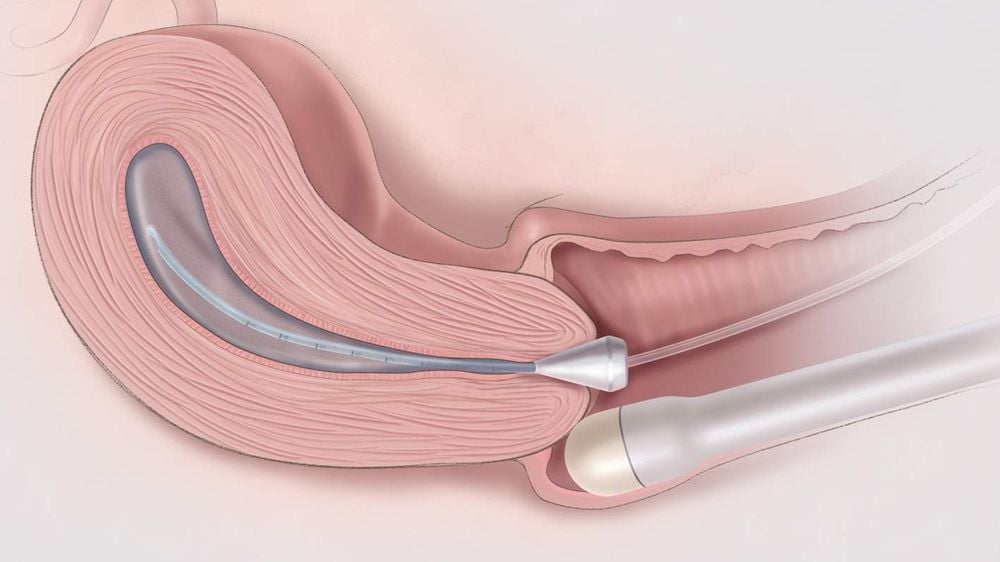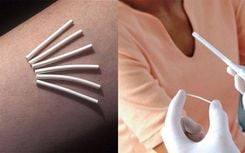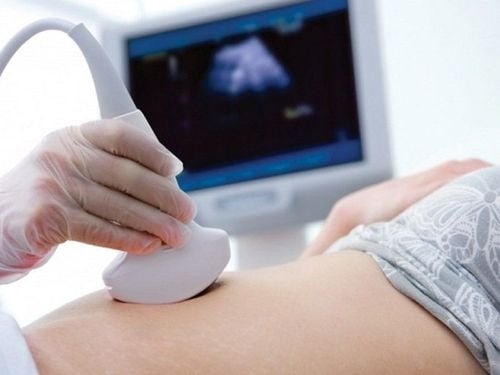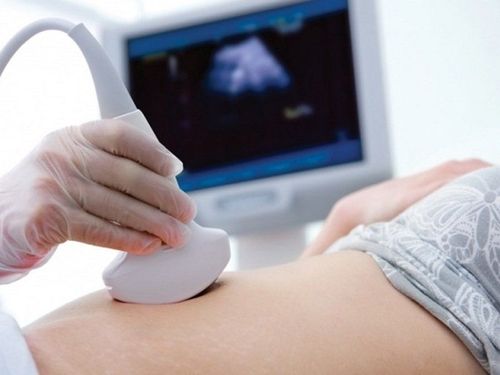This is an automatically translated article.
The article was professionally consulted by Specialist Doctor I Le Hong Lien - Department of Obstetrics and Gynecology - Vinmec Central Park International General Hospital.1. What is prenatal ultrasound?
Prenatal ultrasound uses high-frequency sound waves that cannot be heard by the human ear, transmitted through the skin through a transducer to observe the fetus in the abdomen.With prenatal ultrasound, the echo is recorded, which, thanks to the ultrasound machine's analysis, is converted into pictures and videos of the baby. Ultrasound has the ability to observe fetal images, fetal movements of the amniotic sac, placenta, ovaries, some anatomical abnormalities and birth defects.
Most cases of prenatal ultrasound are assigned to ultrasound on the surface of the abdominal skin, using gel as a conductive medium for better imaging. In addition, in some other cases, transvaginal ultrasound was indicated.
This type of ultrasound is done by inserting a transducer into the vagina of a pregnant woman with the aim of evaluating abnormalities in the cervix, uterus, ovaries and determining the baby's condition, gestational age thanks to images. sharper than conventional ultrasound.

2. Is prenatal ultrasound safe?
Currently, there is no evidence that a properly performed antenatal ultrasound can harm the mother or fetus. The correct ultrasound technique is one that is performed by the sonographer and does not use any types of radiation.3. In which case is prenatal ultrasound indicated?
Fetal ultrasound is usually ordered on women about 20 weeks pregnant to determine if the baby is developing properly in the uterus. An ultrasound can help observe the baby's body movements, arms, legs, and heart rate.Fetal sex can be determined after 20 weeks of pregnancy. However, ultrasound does not always give an accurate result about the baby's sex, the possibility of ultrasound images being misread as gender can still occur.
Fetal ultrasound can be done earlier in pregnancy to identify:
Suspected cases of twin pregnancy, triplets of pregnancy Past weeks or determining gestational age Fetal ultrasound in the following weeks is available. used to determine:
Health of the fetus Place of the placenta The amount of amniotic fluid around the baby Fetal position The expected weight of the baby

4. What is 3D and 4D ultrasound?
3D ultrasound helps to observe the fetus in three-dimensional space, but does not help clearly observe the baby's movements. 4D ultrasound also helps to observe in three-dimensional space, but can also see the continuous movement of the baby clearly.Both of these ultrasound techniques are important in the detection of birth defects. According to the FDA, pregnant women should go to medical facilities to have an ultrasound performed because medical staff are well-trained and can give helpful advice if there are abnormalities with the fetus.
5. What to prepare before the ultrasound?
Pregnant women are often suggested to drink 4-6 glasses of water before the ultrasound to fill the bladder to help see the image of the fetus better. You may also be asked to refrain from urinating until the ultrasound is done.Some doctors may allow the ultrasound video to be brought home so that the family can capture the moment of the baby in the womb. You can ask your doctor in advance to prepare. If allowed, you will need to bring a blank video tape or DVD to the ultrasound.

6. How does ultrasound work?
When entering the ultrasound room, the pregnant woman is asked to lie on the bed. The doctor will apply a small amount of gel to the skin of the abdomen and then start the ultrasound. Note, this gel helps to increase the image quality without harming the skin or staining the clothes.The ultrasound probe is gently pressed against the skin on the mother's abdomen. It transmits high-frequency sound waves into the body, which are reflected back to structures inside the body, including the fetus. The reflected sound or echo waves are picked up by the transducer and transformed into an image on the ultrasound machine screen. These images can be printed or sometimes recorded on videotape.
Pregnancy ultrasound causes almost no discomfort to the body. Unless the bladder is full, the probe placed on the bladder will cause the urge to urinate. During the ultrasound, you will also be asked to hold your breath several times.
Time for the whole ultrasound process takes about 30 minutes. Once finished, the gel will be wiped from the skin of your abdomen and your doctor will discuss the results of the ultrasound with you.
Vinmec International General Hospital offers a Package Maternity Care Program for pregnant women right from the first months of pregnancy with a full range of antenatal care visits, periodical 3D and 4D ultrasounds and routine tests to ensure that the mother is healthy and the fetus is developing comprehensively. Pregnant women will no longer be alone when entering labor because having a loved one to help them during childbirth always brings peace of mind and happiness.
Specialist I Le Hong Lien has been an obstetrician-gynecologist at Vinmec Central Park International Hospital since November 2016. Doctor Lien has over 10 years of experience as a radiologist in the Department of Ultrasound at the leading hospital in the field of obstetrics and gynecology in the South - Tu Du Hospital.
Please dial HOTLINE for more information or register for an appointment HERE. Download MyVinmec app to make appointments faster and to manage your bookings easily.














